Welcome to the world of homemade playdough that’s gentle on little hands and incredibly malleable! We’re sharing a special recipe that ditches store-bought playdough’s stiffness and the drying effects of traditional homemade versions. Our secret? A soft play dough recipe without cream of tartar!
Instead, we use cornstarch to give it an irresistibly silky smooth texture. Perfect for preschoolers, this playdough is not only super soft but also easy to create at home.
Read on to discover our expert advice and step-by-step guide on how to make playdough that’s bound to become a favorite in your household.

This post may contain affiliate links, which means that at no cost to you, I may earn a small sum if you click through and make a purchase.
We’re big fans of play dough at our home, and we’ve experimented with all sorts – from lemon scented playdough to cooling peppermint playdough, and even versions made with unconventional ingredients like our orange creamsicle playdough made with cornstarch and conditioner.
But among them all, there’s one that holds a special place in our hearts – a soft play dough recipe without cream of tartar.
A play dough recipe that omits cream of tartar is a must-have for every preschool activity kit, especially on those endless rainy days when you need to whip it up quick.
The secret to its soft and pliable texture is cornstarch. A few tablespoons of vegetable oil in the mix ensure that the little ones’ hands stay moisturized during play, and prevent the dough from sticking to surfaces and play tools.
Also this recipe is salt-free and taste-safe, making it safe even for children who tend to taste everything, including those who can’t help but lick their hands while playing with the dough.
Super Soft Play Dough Recipe without Cream of Tartar
This super soft play dough recipe without cream of tartar is a popular alternative recipe for creating homemade, fun, and safe play material for children.
The use of ingredients like flour, salt, water, vegetable oil, lemon juice, and food coloring results in a soft and pliable dough that is perfect for creative play, while also being kind to little hands
Ingredients
- 1 cup flour
- 1 cup cornstarch
- 2 tablespoons lemon juice or vinegar
- 2 tablespoons vegetable oil
- 2 cups water
- food coloring (optional)
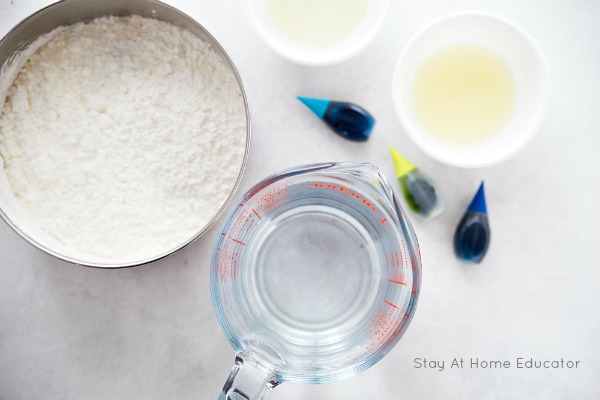
How to Make Playdough With Cornstarch
This is a simple cooked playdough recipe that only takes a matter of minutes to make.
Add all the ingredients to a medium saucepan, pouring in the water last.
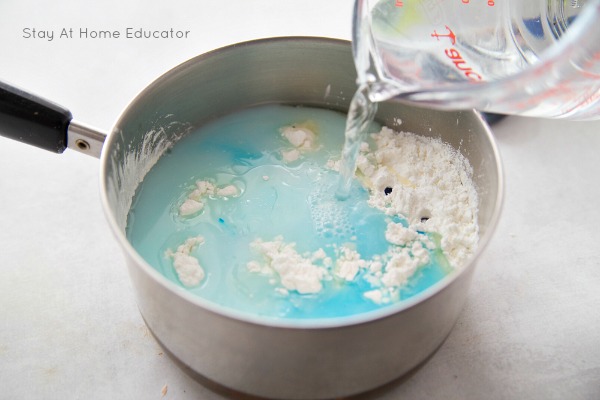
Cook all the ingredients over low heat until the ingredients come together to make a doughy ball.
It’s going to look sticky, and it will be. That’s exactly what we want it to look like.
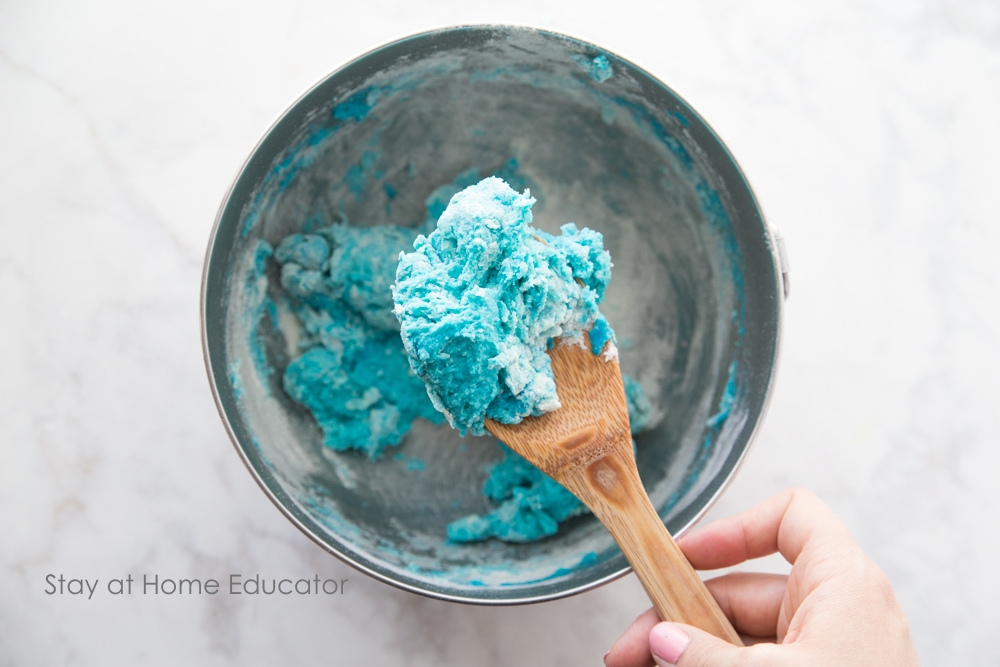
Remove from heat. Allow to cool for a bit, then knead well.
Don’t add any extra flour or cornstarch until the dough is completely cooled. Like making a delicious sweet and sour sauce, the play dough won’t fully thicken until it is completely cooled.
And of course, always allow the play dough to cool completely before letting children handle it.
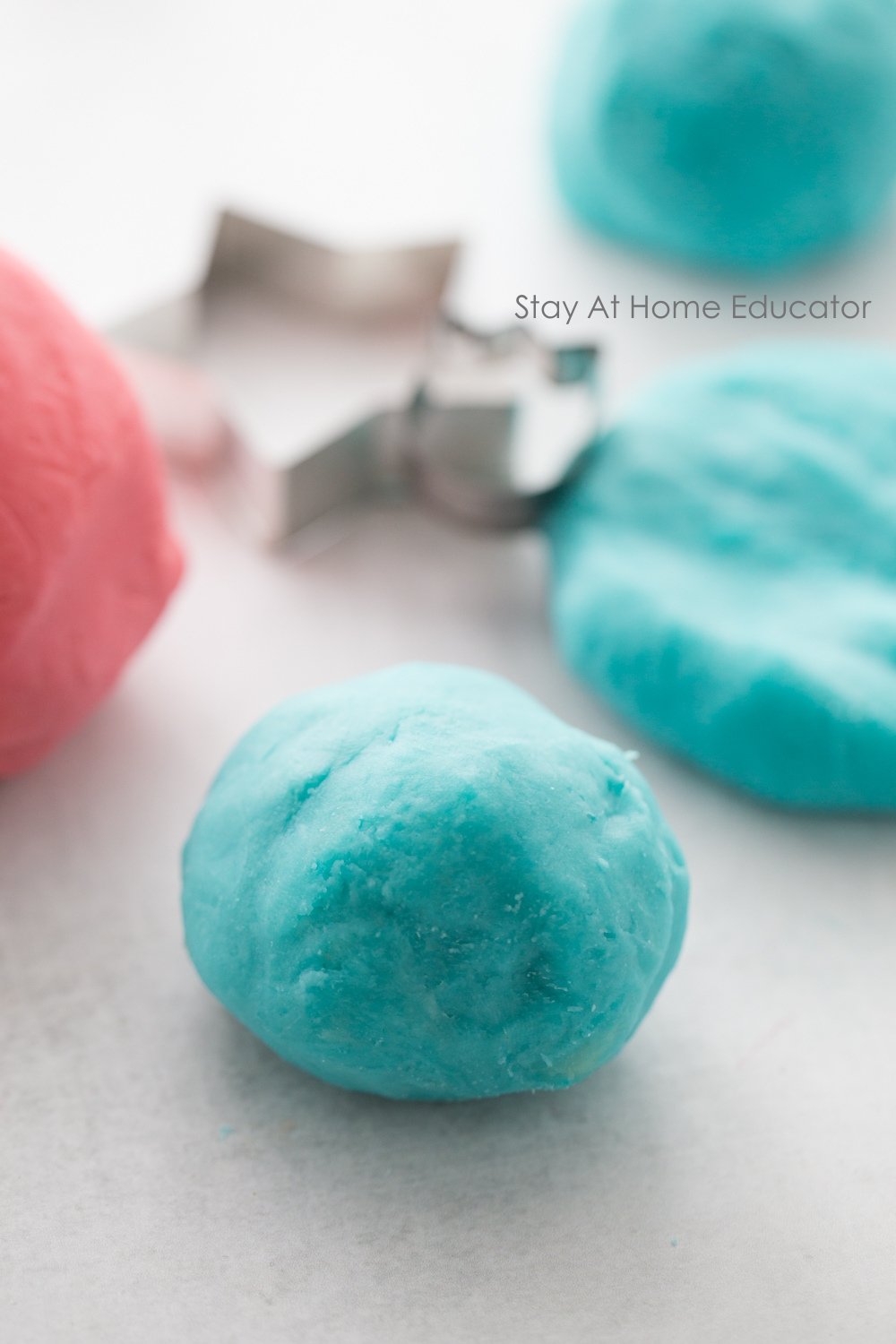
How to Make Playdough Not Sticky
Once the dough is completely cooled, if you do find it a little sticky, just add in more cornstarch a ONE tablespoon at a time. Knead well between each addition of cornstarch. Knead more than you think you need to.
Then, if the playdough is still sticky, add another tablespoon of cornstarch.
Continue the process until the playdough has reached the desired consistency.
How to Make Play Dough Soft Again
If after playing for a while you find the dough to be too crumbly and it has lost it’s silky smooth texture, just use a spray bottle to spray the dough, knead slightly, and store overnight and it will be like new the next day.
How to Keep Play Dough From Drying Out
The best way to keep play dough from drying out is by storing it properly. You will be most successful if you:
- Smoosh playdough into the bottom of an air tight container.
- Cover the playdough with plastic wrap, pushing it down to cover each bit of playdough.
- Cover container with an air tight lid.
To make the playdough last longer, keep it in the fridge, but even without being refrigerated, this playdough can last up to six weeks.
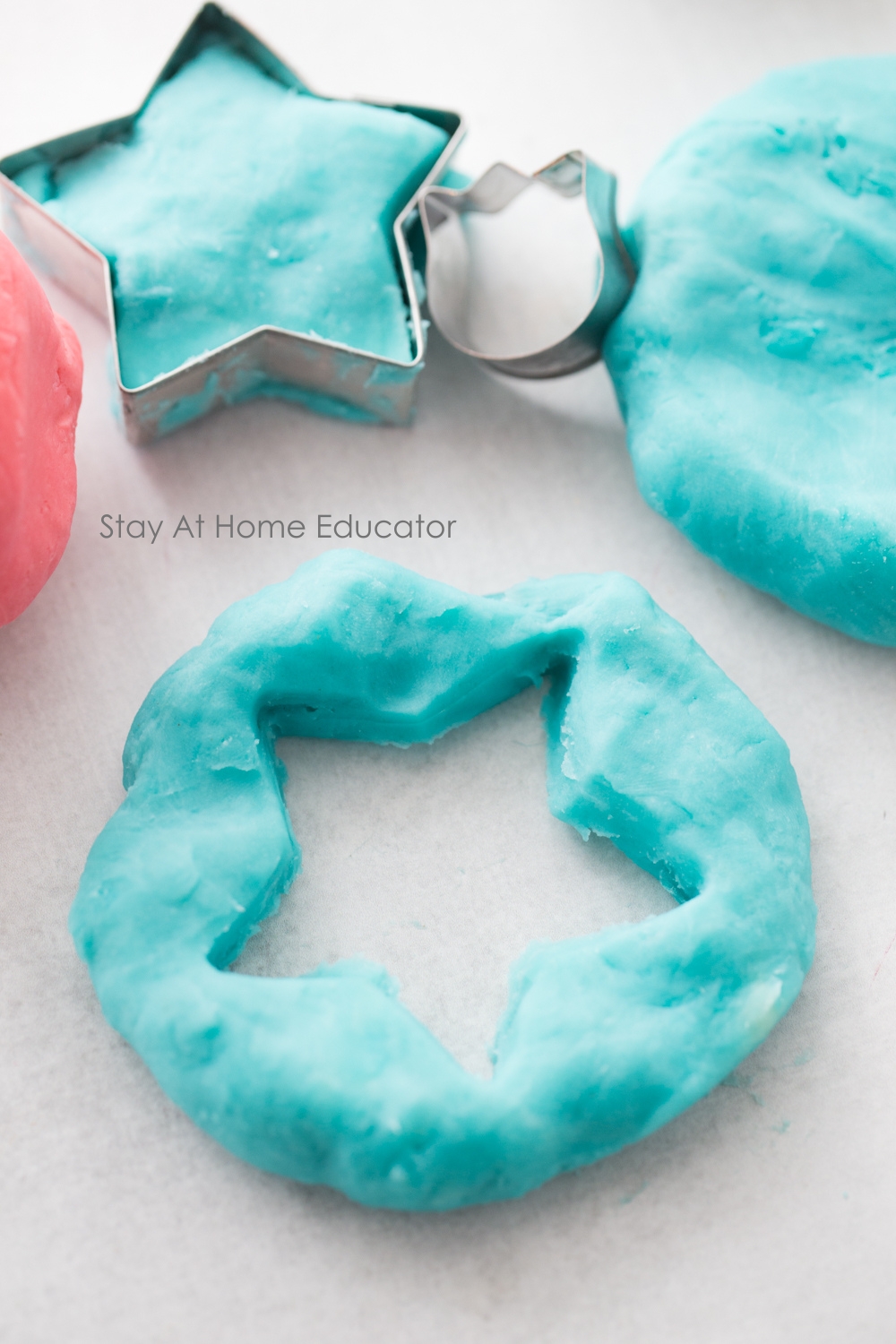
Do you have a favorite play dough recipe without cream of tartar? I’d love to hear the play dough recipes you use with the children.
Cornstarch Playdough Recipes
If you love the texture created by using cornstarch in your playdough, then you will love these other cornstarch play dough recipes.
- Edible Marshmallow Playdough
- Cloud Dough Playdough
- Pure White Playdough Recipe
- Foam Dough Playdough Recipe
- Edible Frosting Playdough
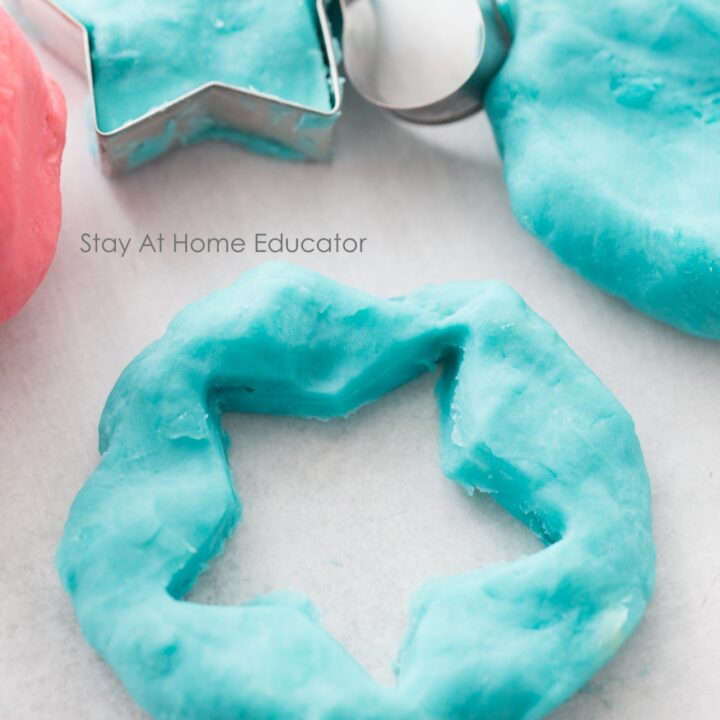
Super Soft Play Dough Recipe Without Cream of Tarter
Super soft playdough that can be made in just a matter of minutes?
Yes, please! This recipe does not require cream of tartar.
Corn starch is the special magical ingredient used instead.
The best part? You probably have all of the ingredients on hand.
So, you can have playdough that is perfectly soft for little hands, in no time flat!
Try this super soft playdough recipe without cream of tartar today and it will become a regular in your preschool playdough collection!
Materials
- 1 cup flour
- 1 cup cornstarch
- 2 tablespoons lemon juice or vinegar
- 2 tablespoons vegetable oil
- 2 cups water
- food coloring (optional)
Instructions
- Add all the ingredients to a medium saucepan, pouring the water in last.
- Cook all the ingredients over low heat until everything blends together to make a doughy ball.
- Remove from heat.
- Allow the playdough to cool.
- Knead the playdough well.
- Add a little more flour or cornstarch, if desired.
Notes
Tips for proper storage to keep playdough from drying out:
- Smoosh the playdough in the bottom of an airtight container.
- Cover the playdough completely with plastic wrap.
- Cover the container with an airtight lid.
- Keep it in the fridge to make it last longer.
*If stored properly, this playdough can last up to 6 weeks (even out of the fridge)!
Recommended Products
As an Amazon Associate and member of other affiliate programs, I earn from qualifying purchases.

I’m Sarah, an educator turned stay-at-home-mama of five! I’m the owner and creator of Stay At Home Educator, a website about intentional teaching and purposeful learning in the early childhood years. I’ve taught a range of levels, from preschool to college and a little bit of everything in between. Right now my focus is teaching my children and running a preschool from my home. Credentials include: Bachelors in Art, Masters in Curriculum and Instruction.
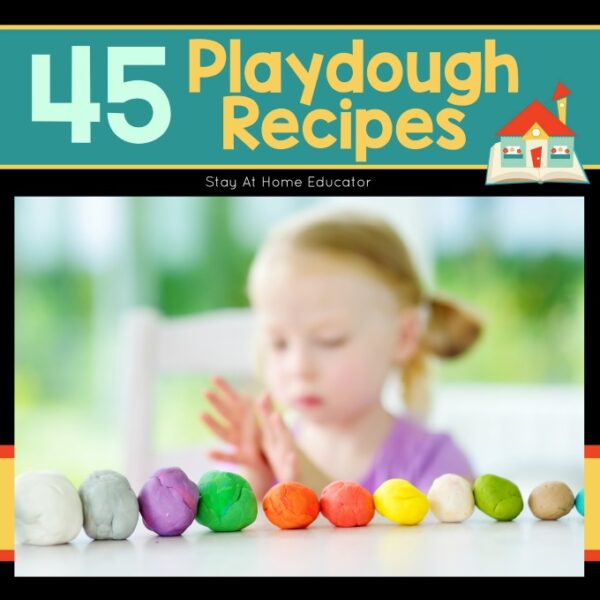







Hi there! Trying this recipe soon! I’ve tried a lot & haven’t found the perfect recipe hoping thus is the one! Can you please go over instructions if adding glitter, food coloring and essential oils. When do I add?
I should make that clear I want to Add all in the same batch!
These are great questions. I always add my oils, glitter and food coloring to the water solution. Just make sure you don’t add it while the water is still boiling. I’d give it a minute to cool.
It’s my month to make playdough for my son’s preschool. I would like to add some lemon essential oil as well as food coloring and glitter. Should this be done while cooking? Or when it comes time to knead the dough? Thank you in advance!
Great question! I always add both glitter and essential oil after I have mixed in the water. I’m sure you could add glitter to the water, but I’ve always just kneaded it in. And with the essential oils, well, sometimes heat can destroy their healing and calming properties, so I always knead them in too.
our school doesn’t usually have lemon juice.
Vinegar will work just as well.
🙂 Thank you for your feedback Sarah! 🙂
Hello Sarah
Please advise in regard to the following:
Does cooking your playdough versus adding boiling water lenghen the shelf life?
What does cooking it on the stove do for the playdough mixture. I did this with other recipes and it’s abit of a disaster.
What is the shelf life of your recipe?
Does the lemon juice trick work?
If I need to make it abit softer, is it best to add extra oil or water.
Any added tips or tricks would be so great!
Yes, lemon juice does work. As for the shelf life of cooking the playdough versus not, I don’t know. We go through playdough quickly enough around here that it doesn’t have time to go bad.
Hello,
Most playdough recipes call for salt. If it’s not added, will the playdough go sour quicker?
I’m honestly not sure. Our playdough gets used quickly enough that we haven’t had to tell!
After the dough cooled down, it’s very soft, but still slightly sticky. I tried using it with my toddler, but it’s sticks to the surfaces and hands. Any idea to fix it?
Hmmm…I didn;t have this problem, but I suggest to continue adding cornstarch or flour under it is not longer sticky.
I tried this recipe scaling it by 1/4. The dough is now warm to touch and feels sticky. Where did I go wrong? I don’t want a sticky play dough.
I wouldn’t want a sticky play dough either! What a mess. Try adding flour or cornstarch until it is not longer sticky.
How long this dough be used to play? When to discard it?
I have used it for up to six months.
Great! I think refrigeration is not necessary, correct?
Never refrigerate this recipe, although doing so might make it last longer.